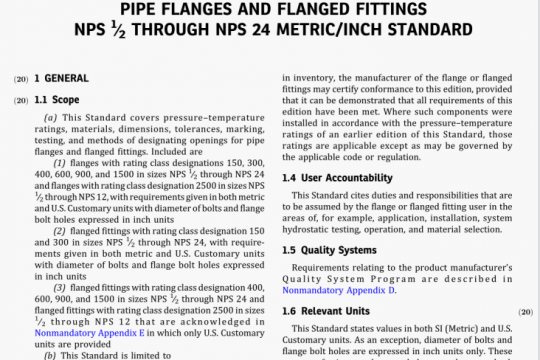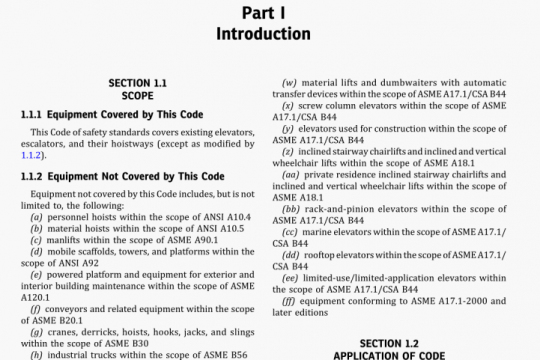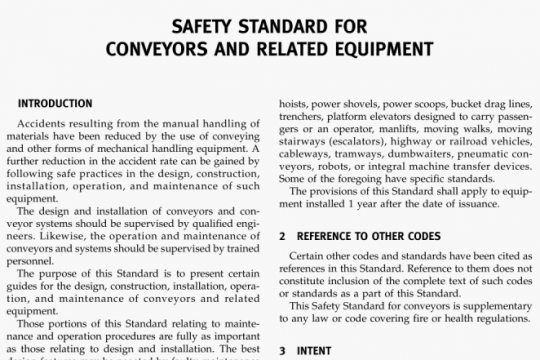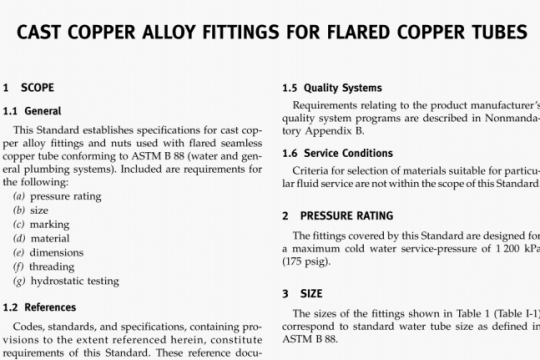ASME B31EA-2010 pdf free
ASME B31EA-2010 pdf free.Addenda to ASME B31 E-2008 Standard for the Seismic Design and Retrofit of Above-Ground Piping Systems ASME Code for Pressure Piping, B31.
ASME B31EA establishes a method for the seismic design of above-ground piping systems in the scope of the ASME B31 Code for Pressure Piping.
1.1 Scope
This Standard applies to above-ground, metallic piping systems in the scope of the ASME B31 Code for Pressure Piping (B31.1, B31.3, 831.4, B31.5, 831.8, 831.9, B31.11). The requirements described in this Standard are valid when the piping system complies with the materials, design, fabrication, examination, testing, and inspection requirements of the applicable ASME B31 Code section.
1.2 Terms and Definitions
active components: components that must perform an active function, involving moving parts or controls during or following the earthquake (e.g., valves, valve actuators, pumps, compressors, and fans that must operate during or following the design earthquake).
axial seismic restraint: seismic restraint that acts along the pipe axis.
critical piping: piping system that must remain leak tight or operable (see definitions) during or following the earthquake.
desiçn earthquake: the level of earthquake for which the piping system is to be designed for to perform a seismic function (position retention, leak tightness, or operability).
ductile piping system: in the context of this Standard for seismic qualification, ductile piping system refers to a piping system where the piping, fitting, and components are made of material with a minimum elongation at rupture of 15% at the temperature concurrent with the seismic load.
free-field seismic input: the ground seismic input at the facility location.in-structure seismic input: the seismic excitation within a building or structure, at the elevation of the piping sys- tem attachments to the building or structure.lateral seismic restraints: seismic restraints that act in a direction perpendicular to the pipe axis.
leak tightness: the ability of a piping system to prevent leakage to the environment during or following the earthquake.
noncritical piping: piping system other than critical piping that nevertheless must meet the requirements for position retention.
operability: the ability of a piping system to deliver, control (throttle), or shut off flow during or after the design earthquake.
position retention: the ability of a piping system not to fall or collapse in case of design earthquake.
seismic dcsi’n: the activities necessary to demonstrate that a piping system can perform its intended function (position retention, leak tightness, operability, or a combination) in case of design earthquake.
seismic function: a function to be specified by the engineering design either as position retention, leak tightness, or operability.
scisnic interactions: spatial or system interactions with other structures, systems, or components that may affect the function of the piping system.
seismic response spectra: a pLot or table of accelerations, velocities, or displacements versus frequencies or periods.ASME B31EA pdf free download.




